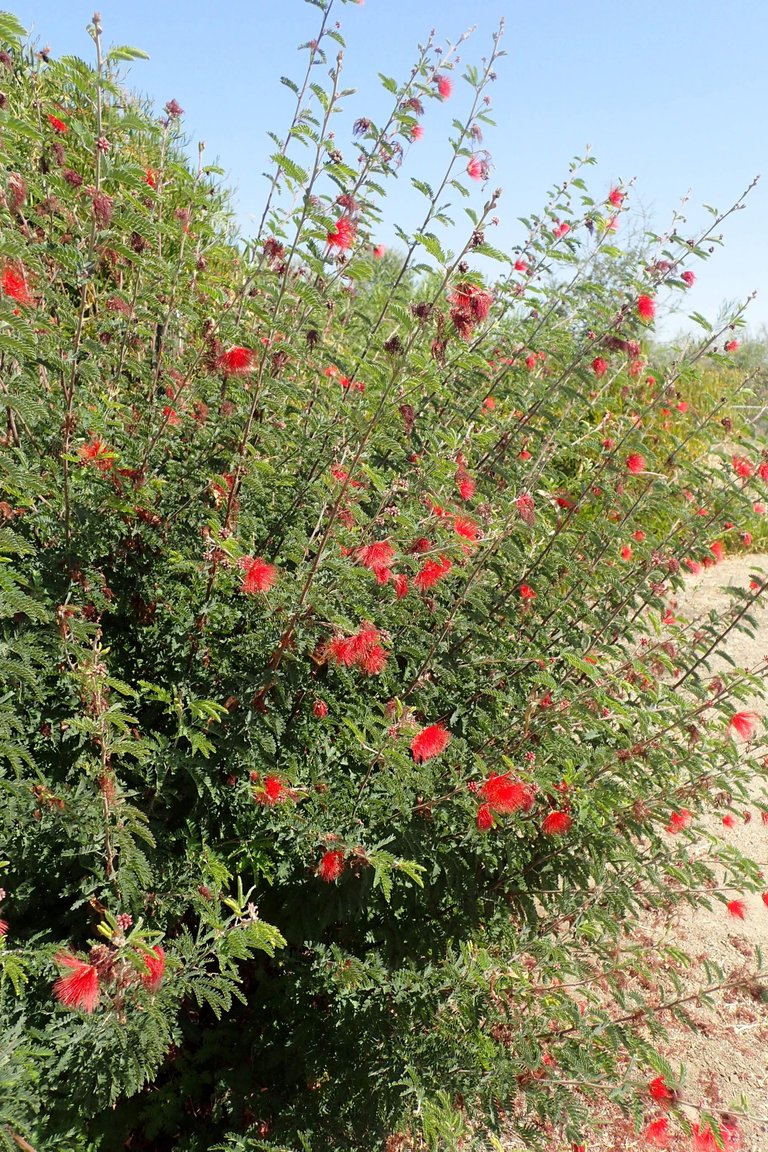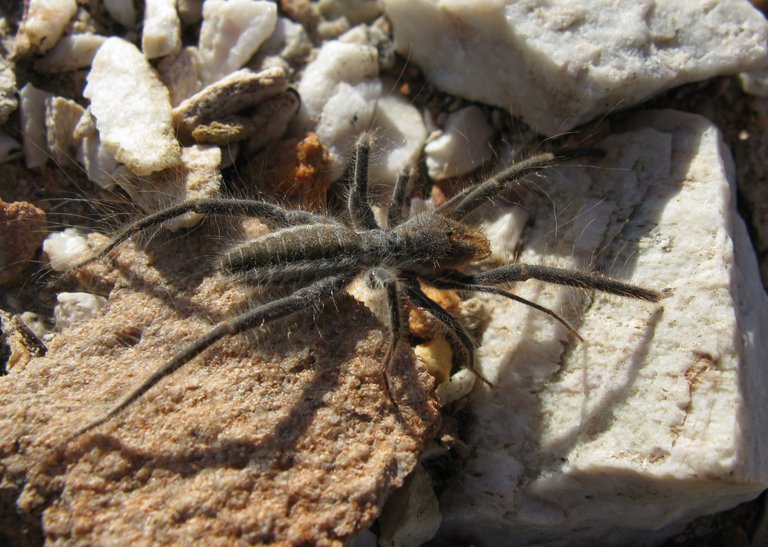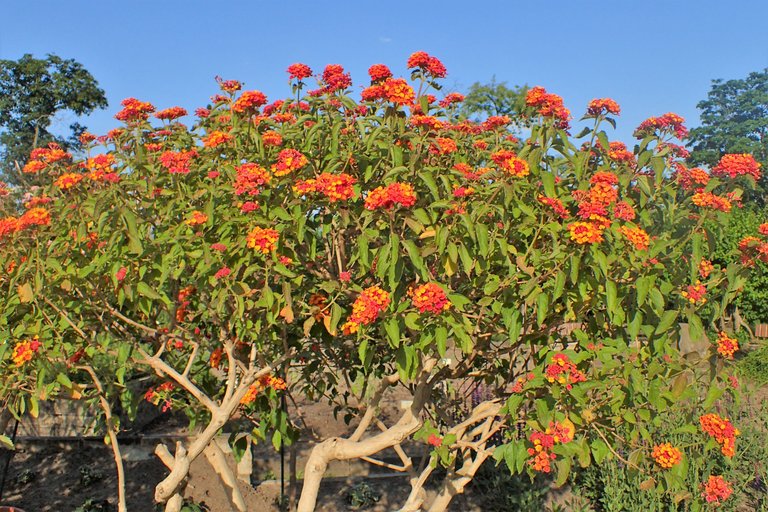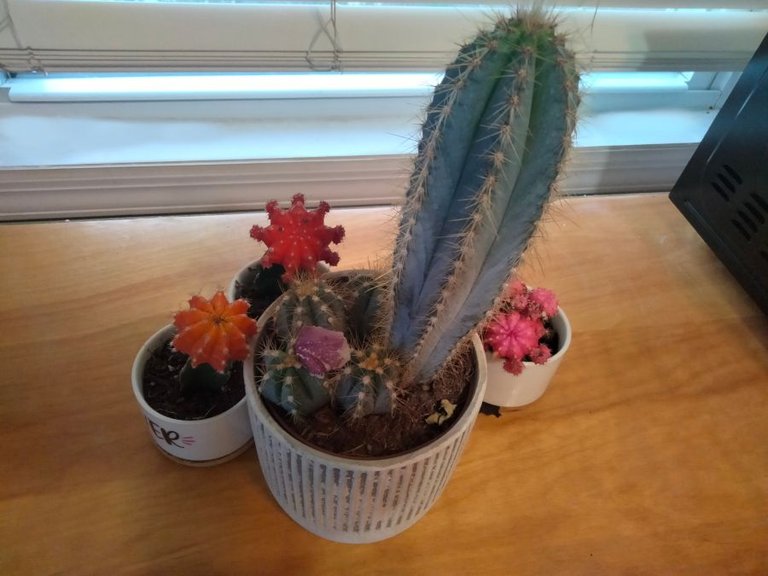
My collage is dedicated to @deirdyweirdy, who noted that my recent pictures have become increasingly dour. In this week's picture, life wins and there is a bright tomorrow :))
The collage began, of course, with the template offered by @shaka for this past week's LMAC Collage Contest (#217).
Template by @shaka

My challenge, when I saw the template, was to come up with an upbeat concept. I didn't have to look far for inspiration. My daughter had given me three cactus plants. They are sitting by my office window, and one of them had produced a flower. Here's a picture of my cacti...notice the little petal on the central cactus.
Hence, in my collage there were desert flowers. There was life, and a strategy for survival.
I thought of this collage, and planned it, before I knew the specific species that would be represented. I understood, on general principal, that a thriving ecosystem is comprised of different elements that support each other. Therefore, the collage shows a spider that retreats from the midday sun. This spider finds refuge under the welcoming embrace of a plant. Also present in the picture are plants that greet the glaring midday sun with flowers.
After making the collage, I searched for examples that could illustrate these three aspects of the collage
1.) There is a flower species that blooms in bright sun.
2.) There is a spider species that seeks shelter from midday sun.
3.) There is a plant species that offers refuge to spiders in a mutualistic relationship.
Baja Fairy Duster Calliandra Californica (Plant That Loves the Sun)

Krzysztof Ziarnek, Kenraiz. Used under CC 4.0 Attribution Share Alike International License
The information in this paragraph is taken from Gardening Know How: "Growing fairy duster prefers a sunny area, the hotter the better." This plant may tolerate the shade, but it loves the sun. It also loves water. Plant in a sunny spot in the garden and you will see the birds flock to it. "Hummingbirds flock to the fairy duster plant, as do wrens, finches, and other birds that live in the desert environment."
Solifugid: Camel Spider (Spider That Avoids the Sun)

Credit: jonfichfield. Used under CC 3.0 attribution share-alike international license
I have read on some sites that the solifuge is not a true spider. However, the Denver Museum of Natural History refers to the solifuge as an arachnid. According to the Museum website, the solifuge is the sixth most diverse order of arachnid, and yet little is known about its biology. The spider does retreat from the sun, though. Its name, 'solifuge', is derived from Latin and means, Those that flee from the sun.
The following information is taken from the website, Bug Eric Blogspot. The solifuge favors arid regions and is largely nocturnal. If you want to discover one in the daytime, flip over a rock or plant and you will find the spider hiding. These spiders are voracious, effective hunters, and run very fast. "Their jaws, or chelicerae, are the largest for body size among the group of animals that possess these specialized mouthparts". (This last bit of information about jaw size was obtained from Phys.org.)
Common Lantana Lantana Camera (A Plant That Shelters Spiders)

Credit: Krzysztof Ziarnek, Kenraiz. Used underCC 4.0 Attribution Share Alike International License
A chapter in the book Behavior and Ecology of Spiders explains that spiders and plants often interact to the benefit of both. "Spiders derive benefits from plants such as shelter and access to insect prey. In turn, they can protect plants against herbivory...Specific spider–plant associations are mutualistic if spiders provide protective or nutritional benefits, thus improving plant fitness, and if plants provide shelter and suitable foraging sites to spiders."
One plant that fits this mutualistic description is the common lantana. The spider Evarcha culicivora is attracted to the plant because of phytochemicals released by the common lantana. The young in this spider species feed on nectar. The mature spider feeds on insects--insects that would be injurious to the plant. Also,the spider uses the common lantana for mating.
An interesting aside to this discussion is the benefit to people from this plant/spider mutualism. Apparently the spider has an appetite for vertebrate blood, which it obtains indirectly by feeding on the female anopheles mosquito. It is this female mosquito which most commonly transmits malaria.
I borrowed from Pixabay and from the LMAC Image Gallery, LIL, as I made my collage. Thank you @yaziris and @muelli from LIL.
Garden flowers
@yaziris
https://www.lmac.gallery/lil-gallery-image/7645Spider
@muelli
https://www.lmac.gallery/lil-gallery-image/4592Desert
https://pixabay.com/sv/illustrations/%C3%B6ken-berg-solnedg%C3%A5ng-1052092/
And one photo that I had contributed to the LIL Gallery:
As is always the case, I had a false start. Here is what that looked like:

I chucked that picture (after I had made a GIF from it!), got up the next morning and made the collage featured at the top of the page and below.

LIL is not only a valuable image resource for the Hive community, but is also a way for community members to participate in LMAC. Anyone on Hive can contribute to the library and everyone can borrow from it. Learn about the procedure here.
Every week we offer prizes to fifteen finalists in the contest, but it's not only the prizes people create for. I personally spend hours giving vent to my imagination, though I don't compete in the contest. Others in the community have also developed the habit of 'speaking' through collage.
This week's contest has concluded. However, anyone can make a collage, freestyle, anytime and post it in the community, outside of competition. We love art :) The contest resumes again on Thursday, July 4.
As @shaka has said many times, everyone is an artist. I may not be an artist in the technical sense, but LMAC allows me to nurture my own unique artistic voice.
Thank you for reading. Peace and health to all
